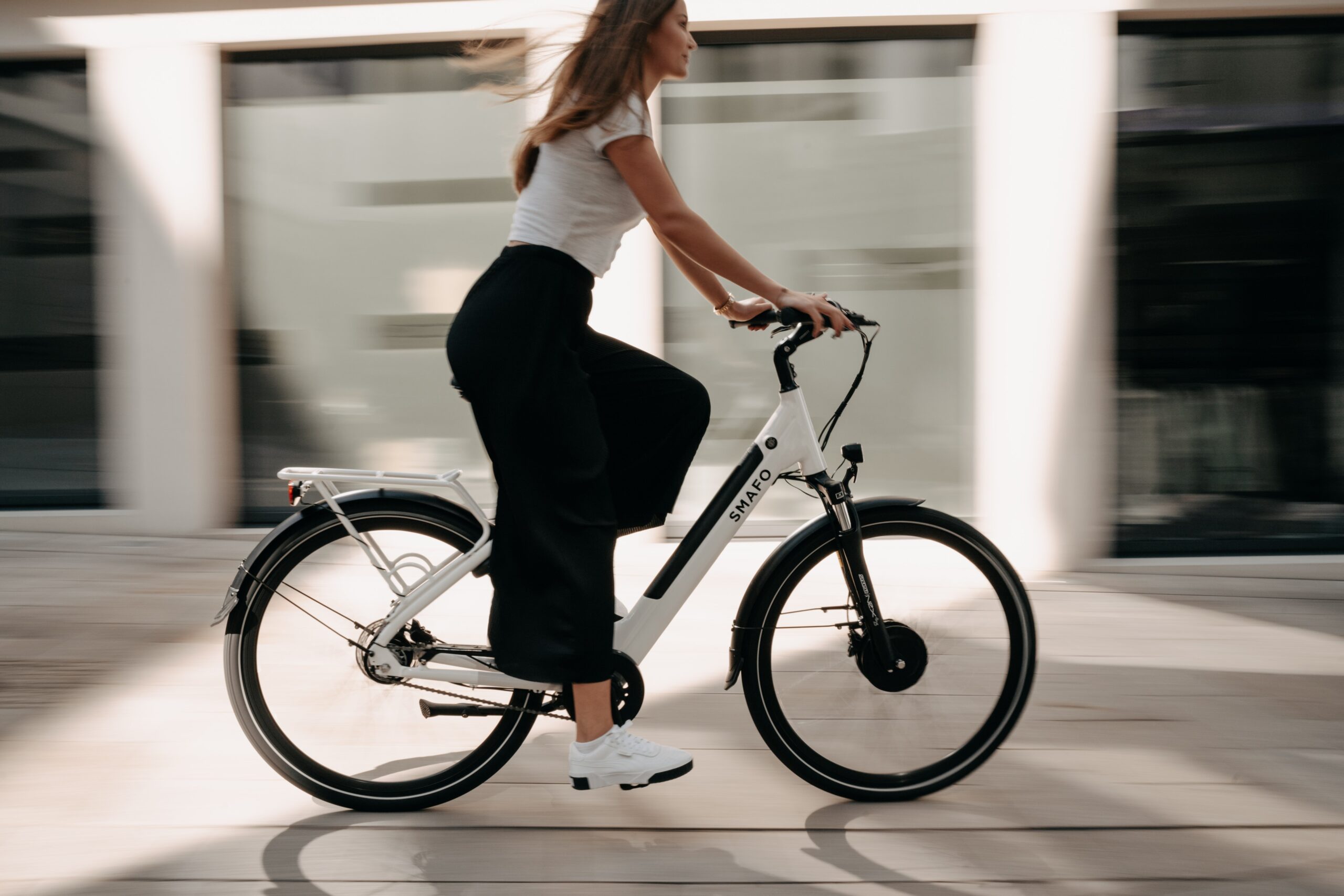Whether you’re looking to upgrade your bike commute, decrease your vehicle usage, or simply have a fun new toy to play with, an e-bike is well worth it. E-bike commutes are great for the environment and get you some light exercise out in the fresh air. The fun you can have exploring the world on an electric bike is endless!
However, the number of technicalities and jargon you have to learn when shopping for an E-bike can get overwhelming. Let’s unravel some of the considerations e-bike beginners face and go through the top five things you should look for when you’re shopping for your first e-bike.
- Choose an Accurate Power-to-Weight Ratio
One size does not fit all when it comes to finding the best bike for sale, and that adage is even more important when it comes to e-bikes. The size and weight of your ideal bike are completely dependent on factors like your weight and height. Make sure you purchase a bike that has been perfectly optimized for your build. If you have physical limitations like heart issues or asthma and an E-bike is a way of staying fit in a gentler, more supportive way, choosing the right power-to-weight ratio is especially important.
It’s worth it to consider investing in a custom e-bike designed with your body weight, strength, and goals in mind. This way, you’ll never have to question whether your e-bike is right for your body or not. Quality, custom e-bikes can be made lightweight and for any body type. A custom e-bike frame has many other fringe benefits besides ergonomics, such as material customization, style, and long-term comfort.
- Decide on a Commuter, Cruiser, or Mountain E-Bike
E-bikes are typically divided into three categories based on their typical usage: commuters, cruisers, and mountain e-bikes. What type of bike you should choose depends on how you’ll use it.
- Electric cruiser bikes: These bikes are ideal for an average commute or leisurely rides. They have wider seats, higher handlebars, and offer an ergonomic, comfortable experience. They may have trickier handling at lower speeds due to their heavier weight. For relaxed hobby biking and a normal paved commute, these bikes are ideal.
- Electric commuter bikes: These are usually very lightweight, which means they’re easy to commute with and relatively inexpensive, but also have shorter battery life. These bikes have higher handlebars for optimal comfort and are usually used on paved roads.
- Electric mountain bikes: These bikes reach the highest capabilities of e-bikes in terms of durability, handling, and power. If you’re looking to purchase an e-bike for rugged mountain terrain, you need to do far more research than just reading this article. Mountain e-bikes can also be used for commuting and hobbies, however, as they’re powerful and suitable for rough terrains.
You will also find that there are hybrid electric bicycles that can be used cross-functionally for gravel, road, cyclocross, and touring. Additionally, every e-bike falls into three classes, regardless of the type of e-bike you choose: class 1, class 2, and class 3. These classes indicate the degree of motor assist vs. pedal assist on the bike, meaning how much the motor will kick in when you pedal up to certain speeds. Knowing what kind of pedal-assist you want is key when shopping for an e-bike, and more importantly, ensuring you’re getting a bike that allows you to ride where you want to since these classes dictate regulations for where you can and can’t ride electric bikes.
- Class 1: Your pedaling determines if the motor kicks in or not, and the motor will stop assisting your pedaling at 20 mph.
- Class 2: These bikes also offer pedal-assist up to 20 mph and also offer a throttle.
- Class 3: 100% pedal-assisted (similar to class 1), but motor assistance can continue up to 28 mph.
We recommend doing some additional research to ensure you’re aware of local access rules for electric bikes in your area, too.
- Opt for Durability over Low Cost
Like cars and other vehicles, the lifespan of e-bikes should be taken into consideration when you’re shopping. Certain materials and manufacturing methods will last longer than their cheaper counterparts. Your motor and battery are going to last longer, run more efficiently, and require less maintenance if you buy a higher-end e-bike.
The hundred or so dollars you could save on your initial purchase won’t matter when you’re spending hundreds of dollars on repairs over the bike’s lifespan. Repairing an e-bike is expensive, so choose durable materials like titanium and look for solid user reviews.
How do you ensure durability? Look for a reputable brand that uses durable, lightweight materials and offers custom solutions for the best ride possible. Manufacturers who invest more time and resources into quality control and research are going to have more stable products.
- Choose The Right Motor Placement: Hub Driven, Mid-Drive, or Front Hub
Generally, motors are in two different places on an e-bike: the rear hub, or the bottom bracket.
Hub drive motors are usually cheaper than mid-drive motors, and they’re also slightly less efficient. However, if you’re looking for a simple city or commuter biking, they can be perfectly suitable and also weigh much less, making them more portable.
Mid-drive motors look chunkier but increase stability, efficiency, and handling. If you’re after offroad e-biking where balance, power, and performance are especially important, you might want to opt for a mid-drive.
Neither option is necessarily worse than the other, but they’re certainly different, so you should definitely give both a test drive to feel the difference.
- Find the Right Battery for Your Needs
E-bike batteries vary significantly in their storage capacity, and hence, the distance they can travel before they putter out.
The larger the battery capacity, the heavier the bike, so if weight is important to you, you might consider a shorter-range commuter bike.
Some bikes also have a removable battery you can charge separately. This is convenient for a couple of reasons: you can store an extra battery to go a longer distance, and you can charge them separately from the bike. This is a great option to consider if you’re planning on doing some serious e-biking.
Choose What’s Best For You
We hope this article helped you narrow down your options for e-bikes out there. There are hundreds of different features, styles, and accessories, but ultimately, the choice is up to you. Just remember to give your bike a test drive and do your research before finalizing your purchase. Have fun cycling!




